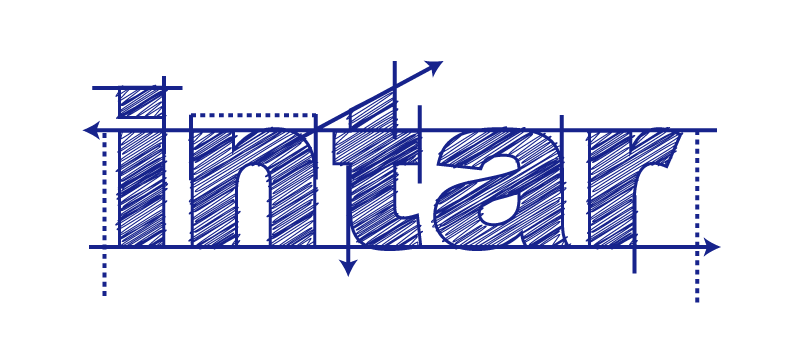Training and assessment strategies

A Training and assessment strategy is a high-level planning document that outlines how an RTO plans to deliver a qualification. All RTOs are required to have documented training and assessment strategies for every qualification on their scope of registration. This allows the regulator to see what the RTO's training and assessment processes will be, to determine whether their strategies meet the Standards.
We haven't yet covered the topic of assessment - this will come in Section 3: Assessing - but it is important to note at this stage that assessment is an essential part of any formal learning program. Assessment not only measures the learner's knowledge and skills in a particular competency, it also puts the effectiveness of your own training strategies to the test.
Developing a training and assessment strategy
Set out below is a systematic method for developing a training and assessment strategy.
1. Consult the stakeholders
Stakeholders include the course participants, their supervisors, company management and anyone else who has a stake in way the learning program is organised and the outcomes it is designed to achieve.
To make sure that you get a full picture of the training needs and the design of the learning program, it's best to draw up a list of people who should be consulted and the questions you need to ask them.
The consultation phase should allow you to clarify the following aspects of the program:
- Purpose of the program and why it is required
- What the program needs to cover
- Who the participants are
- Where the program will be held and how it will be offered
- Resources that will be needed
- WHS requirements that will apply
- Any other legislative or licensing requirements.
Note that the Standards state that the training and assessment strategy must have been developed through 'effective consultation with industry'. So it's important that you document this process to demonstrate that you have engaged in consultation, and taken the advice into account when you develop the strategy.
2. Choose the appropriate qualification or units
Once you have established the overall objectives of the program and filled in the above details, you can confirm the appropriate qualification or individual units of competency that will meet the stakeholders' needs.
To do this, you will need to research:
- the appropriate qualification title and code
- legislative or licensing requirements
- staffing requirements
- assessment requirements
- core units that must be completed
- elective units available
- pre-requisites and co-requisites
- packaging rules for selecting the required combination of core and elective units
- skill sets (where a full qualification is not being undertaken)
3. Design the course structure
When you have decided on the units to be covered under the learning program, you can start to work on the sequencing of the training and how the units can be clustered. Units that go hand-in hand are clustered so that their delivery and assessment can be integrated. This not only helps to minimise unnecessary repetition in training or assessment, it also makes more sense for the learner to see the units as overlapping parts of the overall job.
To work out which units can be clustered, you should consider:
- which units have similar skills, knowledge or resource requirements
- what the enterprise of participant priorities are
- what the AQF level is of the units.
Training delivery mode and methods
You will already have decided on the training delivery mode in your initial consultation phase. The mode is likely to be one of the following options:
- face-to-face on-the-job
- face-to-face off-the-job
- distance learning
- flexible delivery - a combination of the above modes.
The methods you use to deliver the training will be determined by the mode. We discussed a range of methods in Section 1 - Training, including face-to-face instruction, group discussions, role plays and self-paced research or assignments.
4. Choose the assessment methods
We will talk in more detail about particular assessment methods in the Section 3 - Assessing. There are many different ways of assessing a learner's skills and knowledge. Some methods are more appropriate than others in particular circumstances, and it is often the case that you would use at least three different methods to cover all aspects of a certain task.
The methods you would choose from include:
- practical demonstration on-the-job
- practical demonstration off-the-job (in a simulated environment)
- work samples
- written test
- verbal test or discussion
- problem solving assignment
- interview
- presentation.
Your choice of assessment methods will vary from one unit to another. For example, a practical unit is likely to focus on demonstrations and problem solving, whereas a conceptual unit might rely more on written tests or assignments. The 'Assessment requirements' section of the unit will outline the minimum criteria for assessment and provide advice on the most appropriate methods.
5. Identify the materials and resources needed
The materials and resources used in the training and assessment activities will be directly related to the topics covered. The infrastructure and equipment will be the biggest variables.
For example, if you are delivering a qualification in one of the building trades that require on-site installation work, you will need to provide the apprentice with the full range of jobsite installations that are being covered in the competencies you have selected, as well as the tools and equipment required to carry out the work. On the other hand, if you are delivering a traineeship in business administration, your resources may not extend much beyond a training room with standard facilities and office equipment.
Here is a list of the main categories of resources and materials you should consider:
- venue and jobsites (where relevant)
- portable equipment (such as computers, hand tools, portable machinery)
- learning and assessment resources (including course notes, assessment tools and other documents)
6. Identify the staff required
The trainers who deliver the training and carry out assessments must be appropriately qualified, in accordance with the Standards. The current requirements are shown in Appendix 1 at the back of this Learner Guide.
In addition to an approved qualification or skill set, trainers must hold the relevant vocational competencies that they are delivering or assessing. In some cases, they may also need to hold certain licenses, WorkCover accreditations or industry tickets. The Training Package sets out the specific details for each of the qualifications that it covers.
7. Write up the strategy
The format you choose to write up the strategy should reflect the scope of the program and the system of operation used by the RTO. There is no set requirement for a particular layout, unless you are applying to a government funding body and they have stipulated a certain design or supplied a standardised template.

Choose a qualification that you will be delivering or are familiar with. Describe a scenario under which this qualification might be delivered - you may wish to describe your own workplace, or business that you once worked in, or a worksite you are currently training at.
Fill in the following details:
- Profile of the learners
- Qualification (or units) they will undertake
- Who the stakeholders are (that is, who you would need to consult when developing a training and assessment strategy)
- How you would cluster the competencies, and what sequence you would deliver them in.
Then choose one generic unit and one technical unit from your list of competencies and complete the following details for each one:
- Title and code of unit
- Learning resources required
- Venue and facilities required
- Machinery, equipment and consumable items required
- Trainer and assessor expertise and accreditations.

